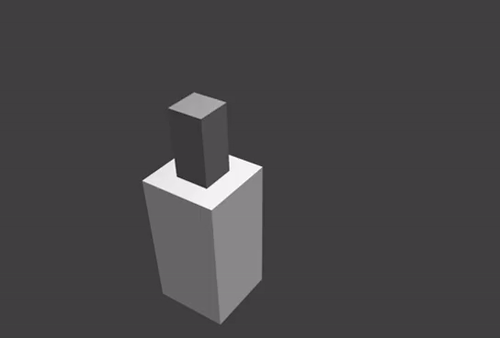🚀Welcome to our post series on Intro to Robotics! 🤖🔬 In this edition, we're diving deep into the fascinating world of robotic mechanics, exploring concepts like degrees of freedom, manipulator anatomy, various joint types, and the captivating configurations that define the incredible versatility of robot arms. So, let's embark on this journey of discovery and innovation!
Degrees of Freedom (DoF) - The Dance of Robots🕺

Imagine a robot as a performer on a dance floor, where each movement is a choreographed combination of steps. These steps are the degrees of freedom, the parameters that dictate how a robot can move independently. Think of them as the "dance steps" that enable the robot to position and orient itself in space. More degrees of freedom translate to more complex and intricate motions, making a robot's potential truly limitless.
Manipulator Anatomy - Crafting the Robotic Arm

The heart of a robot's physical interaction lies within its manipulator, often referred to as the "arm." Much like a human arm, this component is responsible for reaching, grasping, and interacting with the surrounding environment. The manipulator consists of interconnected links and joints, each with its unique role in enabling the arm's dynamic motion. The clever arrangement of these links and joints allows robots to mimic human-like movements or specialize in tasks where precision and dexterity are key.

Manipulator Joints - The Art of Flexibility

The beauty of a robot's movement lies within its joints – the points where different parts of the arm connect. There are several types of joints that enable various kinds of motion:
🔄 Revolute Joints: These rotational joints resemble a hinge and allow a rotating motion like the movement of a door.
Advantages: They provide continuous rotation and are structurally strong.
Disadvantages: Limited to rotation about one axis.
Use Cases: Robotic arms for welding, assembly lines.
↔️ Prismatic Joints: Enabling linear motion, these joints allow parts of the arm to extend and retract, similar to a drawer.

Advantages: Precise control over linear movement, simple design.
Disadvantages: Limited to one-dimensional motion.
Use Cases: Conveyor systems, packaging applications.
🔩 Helical Joints: These joints allow linear and rotational motion simultaneously, similar to a screw.
Advantages: Efficient for translating and rotating objects.
Disadvantages: Complex design, limited in some orientations.
Use Cases: Screw-driving, manufacturing.
🔴 Cylindrical Joints:These joints combine the attributes of revolute and prismatic joints, providing both rotational and linear motion.
Advantages: Combine translation and rotation in one joint.
Disadvantages: Limited compared to dedicated revolute or prismatic joints.
Use Cases: Robotic arms for pick-and-place tasks.
🦾 Universal Joints: These joints accommodate misalignment, allowing rotational motion between non-parallel shafts.

Advantages: Versatile in accommodating misalignment.
Disadvantages: Limited to specific orientations, can introduce vibration. Use
Cases: Automotive steering, industrial machinery.
🌐 Spherical Joints: These joints allow for omnidirectional movement, much like a human shoulder.

Advantages: Full range of motion in all directions.
Disadvantages: Complex design, less strength compared to revolute joints.
Use Cases: Articulated robotic hands, virtual reality applications.
Robot Arm Configurations - Unveiling Innovation Blueprints📐🤯
Robot arms come in an array of configurations, each tailored for specific tasks and applications. These configurations determine the arrangement and capabilities of the robot's joints and links. Here's a closer look at some prominent configurations:
Robot architecture is combination and disposition of the different kinds of joints that configure the Robot Kinematic chain
5 common types of configurations are:
🌍 Polar Coordinate Body-and-Arm assembly (RRP) :
Consists of sliding arm (P Joint) actuated relative to the body that can rotate about both the vertical and horizontal axis (R Joint).

Advantages:
Bend to reach objects on the floor.
Large reach from central support.
Disadvantages:
Complex kinematic model.
Difficult to visualize.
Use Cases:
Machine tool tending, Spot welding automation cells, Assembly operations. , Casting and material handling automation applications, Diecast process tending, Gas welding applications, Arc welding automation.
🔴 Cylindrical Body-and-Arm assembly (RPP)
Consists of vertical column, relative to which an arm assembly is moved up and down. The Arm can be moved in and out relative to the column.

Advantages:
Simple Kinematic Model.
Good accessibility to cavity and open Machine.
Disadvantages:
Restricted working volume.
Requires guides protection.
Use Cases:
spot welding, die-cast machine handling.
📏 Cartesian Coordinate Body-and-Arm assembly (PPP):
Operate within a rectangular coordinate system, precise in linear motions. Includes a sliding joint. Other name includes rectilinear robot or x-y-z robot.

Advantages:
Linear in 3-D.
Simple Kinematic
Constant Resolution.
Disadvantages:
Large working volume.
Requires lot of free space.
Use Cases:
continuous parts loading and unloading on CNC lathes production lines, performing 3-axis (X, Y, Z) pick and place operations of heavy loads with high speed performance and high positioning accuracy
🦾 Jointed-Arm Body-and-Arm assembly (RRR):
Mimics human-like flexibility with multiple segments

Advantages:
Maximum Flexibility and Large working volume.
Reaches upper and lower side of the objects.
Disadvantages:
Complex Kinematics.
Linear Moments are difficult.
Use Case:
Spray painting, Spot welding, Arc welding, Pick and Place Operation.
🤖 Selective Compliance Assembly Robot Arm (SCARA) (RRP):
Selective Compliance Assembly Robot Arm (SCARA). Similar to jointed arm robot except that vertical axis are used for shoulder and elbow. joint can be compliant in horizontal direction for vertical insertion task.

Advantages:
High speed precision.
Disadvantages:
Only vertical axis
Use Cases:
Pick-and-place, Assembly of electronic components and appliances, Sorting
In the dynamic realm of robotics, comprehending degrees of freedom, manipulator anatomy, joint types, and robot arm configurations is essential. This knowledge not only enriches our understanding but also propels the transformation of industries, science, and technology. So, whether you're a student, enthusiast, or industry professional, join us in this captivating journey as we unravel the secrets of robotics and pave the way for a future where intelligent machines work hand in hand with human potential.
Until next time, keep your eyes on the horizon as we venture into new frontiers in the mesmerizing realm of robotics.
#roboticskinematics #robotics #jointhejourney #learningtogether #linkedincommunity #innovationunleashed #technologyrevolution #introtorobotics #robotics #innovation #technology #ros #ros2 #roboticsandbeyond #roboticswithpruthvi #learningjourney #roboticsengineering #machinelearning #artificialintelligence #innovation #technologyadvancements

Comments